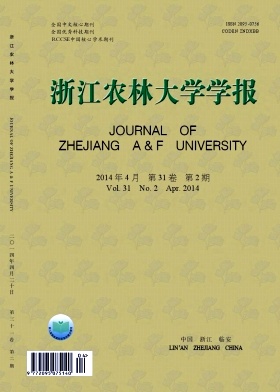-
藜麦 Chenopodium quinoa,又称南美藜、藜谷、奎奴亚藜等,是一种1年生的藜科Chenopodiaceae草本作物,原产于南美洲安第斯山脉,海拔2 800~4 200 m,纬度12°N~39°S 。印第安人认为藜麦是谷物之母,栽植藜麦已有5 000多年的历史。藜麦的商业化栽植始于秘鲁、玻利维亚、厄瓜多尔等国家,1980年美国植物学家将藜麦从南美引入科罗拉多州,2000年后藜麦开始被营养学家们认可并推荐,并于20世纪90年代以后作为候选的特色农作物,被美国、加拿大和欧洲等引进和栽植。中国于1987年由西藏农牧学院和西藏农科院开始引种试验研究,并于1992年和1993年在西藏境内大范围小面积试种均获成功[1]。目前,在陕西、山西、青海、四川、浙江等地均已有小规模适应性种植。藜麦的生长习性和开发利用方式与禾本科的青稞Hordeum vulgare var. nudum有一定的相似之处。青稞是青藏高原1年1熟的标志性作物,可生于海拔4 500 m以上的局部高海拔高寒地带,具有高蛋白、高纤维、高维生素和低脂肪、低糖的特性,但和藜麦相比,其营养价值不全面,且消化系统不好和孕妇等人群宜少食。藜麦则没有这些禁忌,其营养价值极高,营养全面,且具有多种开发利用价值,值得大力度大范围推广。近年来藜麦已经引起各类研究者、生产者及普通消费者广泛的关注,但藜麦作为有待普及和推广的新兴作物,对藜麦的理论研究和开发利用尚有待深入。2013年对藜麦来说更是意义非凡的一年,联合国大会将2013年定为“国际藜麦年”,旨在让世界关注藜麦的生物多样性和营养价值在提供粮食和营养安全、消除贫困以及在支持实现千年发展目标等方面所能发挥的作用。著者在总结前人研究成果的基础上,结合最新研究动态,对藜麦的生物学特性、资源培育、生理学特性、化学成分和开发利用等方面的研究进行了综述,以期为藜麦新品种选育、产品开发利用等提供科学依据。
HTML
-
藜麦原产于玻利维亚、智利和秘鲁一带的安第斯山脉,喜热带、亚热带干湿气候,生长气温为 2~35 ℃,生长适温14~18 ℃,在营养生长阶段可耐轻度霜冻(-1~0 ℃),在种子结实之后可耐-6 ℃低温;为短日照植物,性喜强光;喜高海拔地区,最适栽植于3 000~4 000 m高的山地或高原上;为耐盐碱植物,适宜的土壤pH 4.5~9.5且排水良好的砂质壤土或壤质砂土。Geerts等[2]的研究认为:若能采用整体标定的亏灌标准,可以使藜麦的栽植区域得到大幅度拓展,从而获得稳定的藜麦产量。
-
藜麦为藜科藜属1年生草本,品种丰富多样,基本颜色有绿色、紫色和红色,成熟期颜色会发生改变。茎木质状,直立且粗,分枝或不分枝;叶单叶互生,叶片鹅掌状,叶全缘或叶缘波状锯齿,幼叶绿色,老叶黄色、紫色或红色等;深根性,直根系;生长周期为90~125 d。藜麦花小,花序多样,有穗状花序,圆锥花序,伞房花序等多种类型。藜麦同一植株上有雌花、两性花和雄性败育的花,其比例因品种而异,受遗传和环境的影响。一般为自花授粉,异花授粉率为10%~15%。瘦果,种子外观像小米,大小为2~20 mm,有红、白、黑等多种颜色。目前,藜麦人工改良的品种还比较少,自然变异品种较多。
藜麦一般采用种子繁殖。于早春或夏末播种,条播,苗床须平整且排水良好;播种14~30粒·条-1,覆土2.5~5.0mm。植株在自然肥力低的情况下仍能生长良好,若能施加适量氮肥则生长更为良好;稍耐旱,在种子阶段不要浇过量的水。除草困难,无固定除草剂。当种子变硬至指甲掐不动,且植株开始干枯变为浅黄色或红色,叶子开始掉落时既可收获。种子在储藏前必须进行干燥处理。若在收获期下雨会引发穗萌问题,成熟的种子暴露于潮湿的天气中会在24 h内发芽。种子必须干燥储藏,作食物加工前,必须通过浸泡水中或机械的方法除去种皮中的皂甙。
藜麦整个生长期可以分为6个阶段:出苗期:播种—出苗;幼苗期:出苗—现出花序;显序期:显穗—开花;开花期:初花—终花;灌浆期:终花—籽粒变硬;成熟期:80%以上的籽粒变硬[3]。
-
藜麦对盐碱、干旱、霜冻、病虫害等的抗性能力都很强[4]。Canahua等[5]的研究认为:藜麦有较强抗旱性的原因是因为其形态特征,如根系庞大,须根多而密;含有草酸钙的囊泡具有强大的吸水性。Vacher[6]分析了藜麦对干旱胁迫下的反应,发现在干旱条件下,叶片的水势及气孔导度均很低,但气体仍在交换,所以藜麦可以保持高的叶片水分利用效率,来弥补气孔导度的减少。Jacobsen等[7]在此基础上的研究认为,在干旱条件下,藜麦有敏感的气孔关闭系统,来保持叶片水势,使水分利用效率(WUE)上升。脱落酸(ABA)和气孔关闭系统有关,在藜麦受到干旱胁迫时诱导气孔保卫细胞的膨压下降。
由于丛枝菌根可以最大限度地利用营养素,因此,藜麦可耐盐渍化土壤,并能在盐水灌溉的情况下生长,其可耐酸碱度为pH 4.8~9.5[8]。玻利维亚一带的藜麦栽培品种‘Kancolla’在灌溉所用水的电导率为57mS·cm-1的情况下仍有高达75%的发芽率[9]。Adolf等[10]探究了藜麦耐盐性的机制,认为藜麦耐盐性强的原因可能有:通过隔离控制藜麦叶肉细胞液泡中的钠离子(Na+),木质部中的钠离子(Na+);较高的活性氧耐受性;保留钾离子(K+)能力强以及对气孔的有效控制等。
Garcia等[11]计算了藜麦、花生Arachis hypogaea和棉花Gossypium spp. 的季节性响应因子(ky值),其中藜麦的ky值最低,表示轻微的干旱胁迫不会导致藜麦产量的大幅度减少。Jacobsen等[12]认为藜麦在达到最大生长量的时候其生理学敏感性最高。 Geerts[13]等的研究认为:开花时间和干旱胁迫指标的相关性比生理成熟时间的相关性高,因此,可以利用调亏灌溉来控制藜麦的物候期。
-
Pasko等[14]的研究认为,藜麦种子及新芽中有较多的总多酚。Alvarez-Jubete,Hirose等[15-16]的研究结果与此一致。Alvarez-Jubete等[15]在此基础上对藜麦中总多酚的含量和成分进行了分析,认为藜麦总多酚中槲皮素和山奈酚的含量最多。
-
Estrada等[17]认为皂甙对病毒性疾病有一定的抗性,且可以降低胆固醇的影响以及通过黏膜来增加药物的吸收等。Woldemichael等[18]的研究发现藜麦种子中含有很高的皂甙(20%~30%)。近期一些报道认为对藜麦皂甙进行碱性处理可以提高其生物活性。Brady等[19]的研究认为,热加工工艺处理藜麦粉会导致皂甙分子的降解,从而影响感官及药物性能。Stuardo等[20]对藜麦外壳中皂甙提取物进行了不同的处理,结果表明:和未经处理的藜外壳相比,经过碱处理之后的藜外壳中含有大分子量的皂甙衍生物,有更多的疏水性,且对灰霉病的抗性更强。此结果和Martin等[21],Woldemichael 等[22]的研究结果一致。尽管藜麦外壳中皂甙成分很高,但这种副产物的商业价值并没有得到相应的重视。人们在食用藜麦之前一般都会用清水浸泡除去外壳以减少苦味,并没有对其外壳进一步加工利用。
-
Zhu等[23]从藜麦种子中分离出6种黄酮类化合物,分别为山奈酚3-O-[β-D-呋喃芹菜糖基(1′-2″)]-β-D-半乳糖苷{kaempferol 3-O-[β-D-apiofuranosyl(1′-2″)]-β-D-galactopyranoside},山奈酚3-O-[-L-吡喃鼠李糖基(1″-2″)]-β-D-半乳糖苷{kaempferol 3-O-[-L-rhamnopyranosyl(1″-2″)]-β-D-galactopyranoside},山奈酚3-O-[β-D-呋喃芹菜糖基(1′-2″)-L-吡喃鼠李糖基(1″-6″)]-β-D-半乳糖苷{kaempferol 3-O-[β-D-apiofuranosyl(1′-2″)--L-rhamnopyranosyl(1″-6″)]-β-D-galactopyranoside},山奈酚3-O-(2,6-di-L-吡喃鼠李糖基)-β-D-半乳糖苷{kaempferol 3-O-(2,6-di-L-rhamnopyranosyl)-β-D-galactopyranoside},槲皮素 3-O-[β-D-呋喃芹菜糖基(1′-2″)-L-吡喃鼠李糖基1″-6″)]-β-D-半乳糖苷{quercetin 3-O-[β-D-apiofuranosyl (1′-2″)-L-rhamnopyranosyl(1″-6″)]-β-D-galactopyranoside}和槲皮素3-O-(2,6-di-L-吡喃鼠李糖基)-β-D-半乳糖苷{quercetin 3-O-(2,6-di-L-rhamnopyranosyl)-β-D-galactopyranoside}。Hirose等[15]又从藜麦种子中分离得到4种黄酮类化合物,分别为槲皮素(quercetin),山奈酚 3-O-(2″,6″-di-O-α-吡喃鼠李糖基)-β-半乳糖苷[kaempferol 3-O-(2″,6″-di-O-α-rhamnopyranosyl)-β-galactopyranosides],槲皮素3-O-(2″,6″-di-O-α-吡喃鼠李糖基)-β-吡喃葡萄糖苷[quercetin 3-O-(2″,6″-di-O-α-rhamnopyranosyl)-β-glucopyranoside]和槲皮素3-O-(2″-O-β-呋喃芹菜糖基-6″-O-α-吡喃鼠李糖基)-β-半乳糖苷[quercetin 3-O-(2″-O-β-apiofuranosyl-6″-O-α-rhamnopyranosyl)-β-galactopyranoside]。
-
研究发现,藜麦有丰富的纤维素、淀粉等多糖[16]。另外,人们对藜麦中多糖类的化学成分也进行了一定的研究。Cordeiro等[24]用水及100.0 g·L-1氢氧化钾溶液萃取出藜麦种子(已除去淀粉)中的多糖,通过冰冻-解冻及膜连续超滤的方式对多糖进行净化,对净化出的PQW,K2-30EM,K1-10RM 及K1-30RM进行糖成分分析,结果显示:阿拉伯糖所占比例最多,兼有少量的鼠李糖和半乳糖,而糖醇酸的从比例4%~27%不等。
-
Lamacchia等[25]的研究认为,和普通谷物相比,藜麦中可利用的蛋白质质量分数最高。陈毓荃等[26]的研究认为,藜麦中蛋白质高达155.7 g·kg-1,并富含赖氨酸(57.1 g·kg-1),精氨酸(100.6 g·kg-1) 等碱性氨基酸,天冬氨酸(7.6.3 g·kg-1),谷氨酸(116.3 g·kg-1) 等酸性氨基酸。Bhargava等[27]的研究认为,藜麦中还有蛋氨酸(4.0~10.0 g·kg-1)等中性氨基酸。
-
Hirose等[16]的研究表明,藜麦中含有丰富的矿质元素(30.0 g·kg-1 ),锰、钾、钙、镁、磷、铁的质量分数远高于传统的谷物。
-
藜麦中维生素B1,维生素E,脂质,不饱和脂肪酸等的质量分数也很高,其中脂质质量分数可达普通谷物的2~3倍,且脂质稳定性较高[15-16, 28]。
4.1. 总多酚
4.2. 皂甙
4.3. 黄酮类
4.4. 多糖
4.5. 蛋白质与氨基酸
4.6. 矿质营养素
4.7. 其他成分
-
和其他谷物相比,藜麦的蛋白质质量分数很高(140.0~220.0 g·kg-1);富含多种氨基酸,其氨基酸比例和联合国粮食与农业组织(FAO)提出的理想比例接近[29-30];脂肪为20.0~100.0 g·kg-1[31];膳食纤维丰富,且不含麸质[32];并富含多种矿质物质及维生素等。由于藜麦中既含有纤维又含有蛋白质,还被作为减肥食物受到广大爱美人士的推崇。藜麦的种子可以像小米 Setaria italica一样直接煮食,也可以磨制成粉制作各类面食,还可以做汤;另外,藜麦的嫩叶和嫩芽也可以当蔬菜食用,可作成营养丰富的色拉。目前,市面上藜麦的加工产品主要有:藜麦粉保健品、藜麦八宝粥、藜麦苹果汁以及藜麦发酵的白酒等。
-
藜麦中含有丰富的维生素、离胺酸等成分,而维生素B1可以减缓肌肤干燥,离胺酸可以使肌肤变得紧致有弹性。因此,藜麦可以用作化妆品原料中,如口红、洗发水、身体乳等。目前,已有多种多样的藜麦系列的保养产品见于市面。另外,藜麦中的皂甙具有广泛的药理作用和生物活性作用,如免疫作用、表面活性作用、抑菌、抗肿瘤作用、防治心血管疾病等,而且还可以作为食品天然甜味剂、保护剂、发泡剂、增味剂、抗氧化剂等[33-34]。
-
藜麦的种子及其他部分含20.0~60.0 g·kg-1皂甙(saponin)类次级代谢产物。这些皂甙及其衍生物对人体无毒,可以成为安全的农用杀虫或驱虫剂,用作有机农药杀血吸虫(杀软体动物);还可用作农用饲料、润湿剂和根生长剂等[36]。另外,藜麦茎秆可以作为动物的绿色饲料,无毒无害,且营养丰富。
-
Lucimara等[26]认为,从藜麦中提取的阿拉伯多糖及果胶类多糖可以治疗溃疡。另外,藜麦中含有天然植物雌激素,植物雌激素主要是异黄酮(类黄酮物质之一)活性成分,在临床上经常用来降压、降糖、降脂,以及预防心脑血管、动脉粥样硬化等疾病,尤其对乳腺癌、前列腺癌、绝经期综合征、心血管病和骨质疏松有显著作用[35]。
-
藜麦抗逆性强,品种多样,株高为0.2~3.0 m,种子颜色多样,有白色、黄色、粉色、深红、紫色和黑色等。有些品种的观赏价值很高,若能将这些观赏价值高的藜麦经济作物用作城市绿化中,可以丰富园林绿化模式,形成独特的城市绿化中的农作物景观。
5.1. 食用开发
5.2. 工业开发
5.3. 农用开发
5.4. 药用开发
5.5. 观赏价值开发
-
近年来,国内外学者对藜麦有一定的研究,但缺乏深入系统的研究。一方面,由于藜麦原产于高海拔地区,且喜热带、亚热带干湿气候,所以对于低海拔的地区来说,引种藜麦有一定困难,需筛选和培育出适合在低海拔地区生长的藜麦品种,从而扩大藜麦的栽植范围。另一方面,虽然藜麦已经有5 000多年的栽植历史,但是它的许多价值是在最近几十年才得到人们进一步的认识和重视。目前,对藜麦化学成分的提取和鉴定以及生物活性等方面的研究还处在初步阶段,对藜麦的开发利用不够。总之,鉴于藜麦的潜在利用价值很高,对其品种资源、抗逆性、营养成分和开发利用价值等方面进行深入系统研究和开发,具有重要的理论意义和广阔的应用前景。






 DownLoad:
DownLoad: